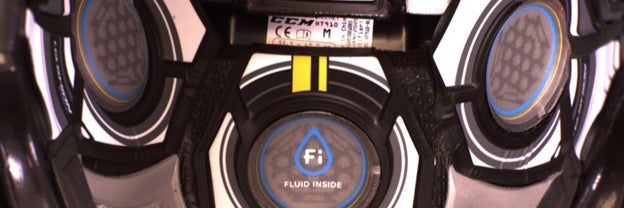It’s always important to have the right tool for the job! That’s why your hockey stick is so important. Using a hockey stick that isn’t right for you can mean that you won’t be getting the best results on the ice - so it’s important to figure out which stick fits you the best before the game starts. It's extremely important to consider the right fit for you depending on your height, style of play, and position. If you're unsure about what hockey stick is right for you, we can help whether you're shopping us in store on online!
Which stick length is best for me?
Hockey sticks come in 4 different lengths: senior, intermediate, junior, and youth. There is also a smaller specialty stick category called "Tyke" that have lower flex ratings than junior sticks. Each of those sizes has a different height and flex rating. Youth and junior sticks are explicitly designed for younger children and feature shorter lengths, proportionately designed blades, and less stiffness than intermediate and senior sticks.
| Age Group | Height | Weight | Stick Flex Rating |
| Tyke (3-5 years) | 3'0"-3'10" | 30-65 lbs | 20-25 |
| Youth (5-8 years) | 3'6"-4'8" | 40-80 lbs | 30-40 |
| Junior (7-12 years) | 4'4"-5'1" | 70-110 lbs | 40-55 |
| Intermediate (11-14 years) | 4'11"-5'8" | 95-140 lbs | 55-70 |
| Senior (14+ years) | 5'7" and above | 140+ lbs | 70+ |
Pro Tip: If you're buying a stick for you child, resist the temptation to buy a longer stick that you think they'll "grow into." Not having the proper sized stick can negatively impact a child's development and enjoyment of the game.

What flex do I need?
Flex on a stick is a measurement of how stiff the stick is. You’ll see it represented as a number on the stick itself. Simply put, this number represents how many pounds of pressure it would take to bend the stick one inch. So a stick with a flex of 50 would need 50 pounds of pressure to bend an inch. Therefore, the higher the flex, the more difficult a stick is to bend. Finding the right stick with the right flex is important for any player no matter how far along in their hockey career they are.
Pro Tip: Stick flex is very subjective. Some players want a stiffer stick while some want one that generates more whip. It’s important to understand at least the ballpark of stick flex options you should be in so you can really hone in on which stick works best for you.
Looking for more info on stick flex? Check out our full article about which flex is best for you!
What is kick point?
While not completely tied to the size of the stick, there is a correlation between your stick's kick point, size, and your play style. In short, the kick point is where the stick flexes when you shoot or pass the puck. Here is a general guide to kick points and which you might want depending on your play style and the size of your stick.
| Kick Point: | Style of play: | Relationship to size |
| Low | Quick release shots, agile puck handling | Players who favour agile puck handling tend to choose shorter sticks. If you're a shifty forward who likes to make plays around the net, you'll benefit from a shorter stick with a lower kick point. |
| Mid | Built for power and leverage | Players who wind up for slapshots and one-timers tend to favour these sticks. If you're a taller defenceman who likes to lean into shots from a distance you'll benefit from a longer stick with a mid kick point. Note that the CCM Supertacks is the only remaining pure mid kick stick on the market currently. |
| Hybrid | Balanced between low and mid | These sticks are designed to flex wherever your bottom hand is positioned during your shot. This means they can be adapted for either quick releases or more powerful shots on the fly. If you want to adapt to as many situations as possible and be an extremely versatile offensive player, you can choose a stick with a variable kick point. |
Pro Tip: Your stick can be the right size but if you have the wrong kick point for your style of play, you still might not get the most out of it. Many brands are also gravitating more towards Hybrid kick sticks because of their versatility.
What position do I play?
Position is another factor to consider when choosing a stick. Are you a shifty forward who’s looking to make plays in tight spaces? Or a shutdown defenceman looking to break up a play on the rush? Depending on your answer, you might choose a different stick length! Forwards that value agility and evasiveness with the puck might pick a stick that’s a bit shorter than what their height and weight calls for because they want to make those plays easier. A defenceman might want a longer stick so they can have a longer reach and break up plays.
Wondering how to tape your new stick? Read our blog for some tips!
Pro Tip: Stick length is adaptable. You can lengthen a stick that’s too short by inserting an end plug and make one shorter by cutting the shaft to the desired length. But remember, cutting a stick to make it shorter does alter its flex. It’s generally believed that each inch cut from the shaft increases the flex of a stick by 10.

Whatever your preference and position, you can count on our unbeatable combination of expert advice and selection whether you decide to shop us in store or online!







